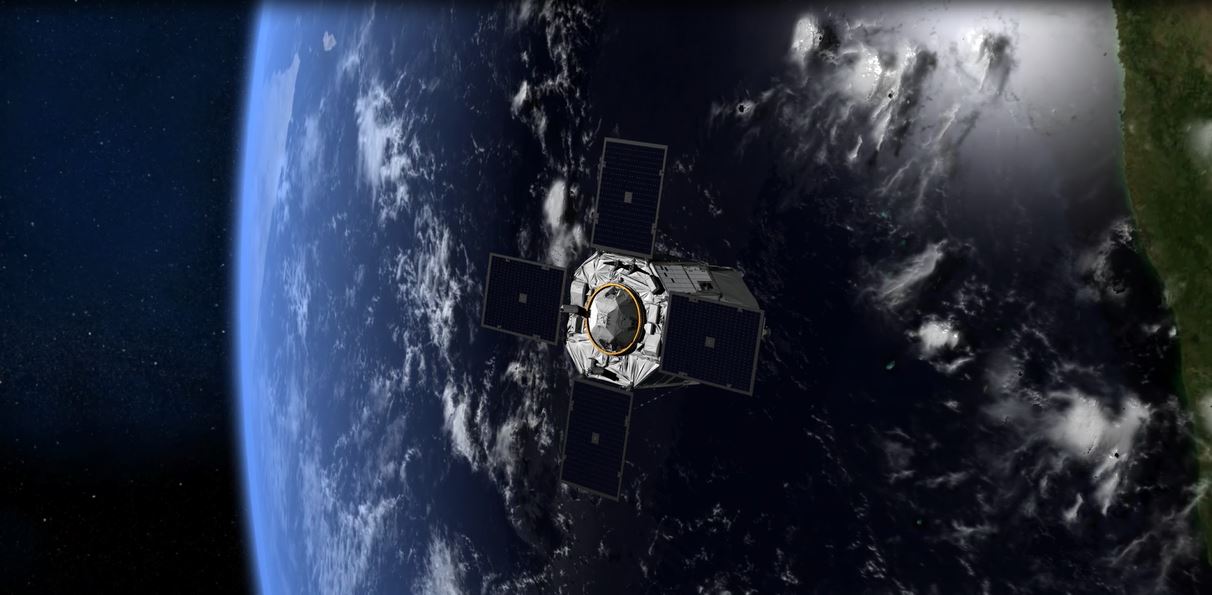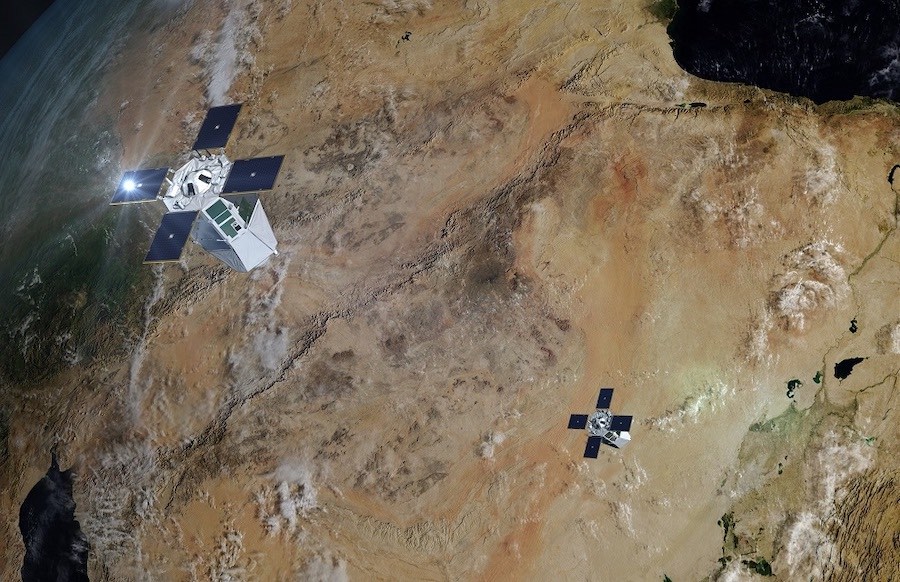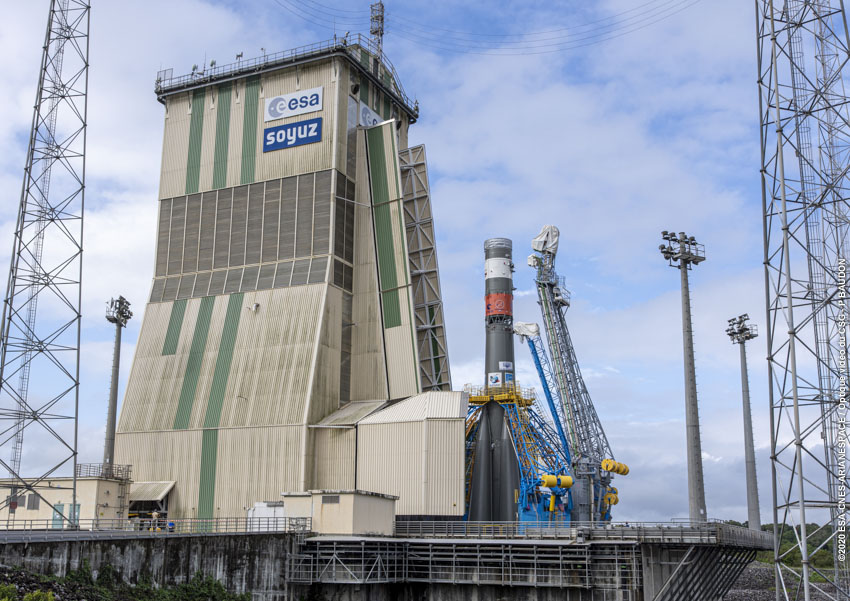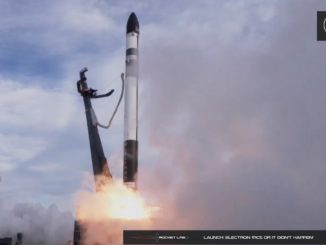
A sharp-eyed French military surveillance spacecraft is set for launch aboard a Soyuz rocket Monday from French Guiana into a 300-mile-high orbit, where it will collect the highest-resolution imagery ever produced by a European reconnaissance satellite.
A Russian Soyuz ST-A rocket rolled out to its launch pad at the Guiana Space Center in South America on Dec. 23. Since then, ground teams have hoisted the French military’s CSO 2 spy satellite — already enclosed within the Soyuz payload shroud — on top of the rocket.
The final assembly milestones set the stage for a launch readiness review Sunday, in which officials from Arianespace — the French launch services provider — are expected to give approval for final countdown preparations ahead of an instantaneous launch opportunity at 11:42:07 a.m. EST (1642:07 GMT; 1:42:07 p.m. French Guiana time) Monday.
The mission is running more than a half-year behind schedule due to launch delays in French Guiana primarily caused by the COVID-19 pandemic. It will be the 10th and final launch of the year for Arianespace, and the seventh launch from French Guiana this year.
CSO 2 is the second satellite to join the French military’s Composante Spatiale Optique, or CSO, series of orbiting reconnaissance platforms.
France’s CSO 1 satellite launched on a Soyuz rocket in December 2018, and the third and final CSO satellite is scheduled to launch on Europe’s new Ariane 6 rocket in 2022.
While CSO 1 launched into an orbit around 500 miles (800 kilometers) in altitude, the CSO 2 spacecraft will head for a lower-altitude orbit approximately 300 miles (480 kilometers) above Earth. Its position closer to Earth will allow the satellite to produce sharper images for French military planners and intelligence analysts.

The CSO satellites are replacing France’s Helios family of military surveillance satellites, the last of which launched aboard an Ariane 5 rocket in 2009.
The new CSO satellites boast better global imaging capabilities than their Helios predecessors, and can take more pictures in a single overhead pass than the Helios spysats, according to the French Ministry of the Armed Forces.
The CSO satellites reportedly have a resolution of around 14 inches, or 35 centimeters, from the 500-mile-high orbit. From the lower 300-mile-high perch, CSO 2’s resolution is predicted to be better than 8 inches, or around 20 centimeters. For comparison, the new WorldView Legion commercial Earth-imaging satellites being developed by DigitalGlobe have a resolution of about 11.4 inches, or 29 centimeters.
The imaging capabilities of the U.S. government’s spy satellites are classified.
Placing the CSO 2 satellite into a lower orbit allows it to “supply imagery at the highest possible level of resolution, quality and analytical precision,” CNES said on its website.
The improved imaging quality from CSO 2, flying in its lower orbit, makes the satellite set for launch Monday well-suited for follow-up observations from other satellites in the fleet. CSO 2 could help identify targets and reveal information not visible to satellites in higher orbits, which have a broader field-of-view.
The new-generation CSO spy satellite fleet is costing the French government more than $1.5 billion, including spacecraft, launch and ground system upgrade expenses, according to French authorities. The program is funded through the DGA, the French military’s procurement agency, and the French space agency CNES is responsible for in-orbit testing, satellite operations, and the purchasing of the spacecraft and launch services.
The French government has agreements to share optical imagery from the CSO satellites with the governments of Germany, Sweden, Belgium, and Italy, officials said. In exchange, the French military receives imagery from German and Italian radar observation satellites, which are designed for day-or-night, all-weather surveillance.
The CSO satellites will also provide intelligence agencies and military officials imagery day-or-night in visible and infrared bands. Each spacecraft features an agile pointing capability, allowing rapid steering from target to target, and enabling views from different look angles for three-dimensional stereo surveillance products.

The 7,852-pound (3,562-kilogram) CSO 2 satellite was built by Airbus, with an optical imaging instrument produced by Thales Alenia Space. The spacecraft is designed for a 10-year mission.
The Soyuz ST-A launcher for the CSO 2 mission will be filled by kerosene and liquid oxygen propellants Monday morning, followed by rollback of the launch pad’s mobile gantry in preparation for liftoff from the Guiana Space Center.
The Russian-built rocket will fire away from the tropical spaceport with more than 900,000 pounds of thrust and head north over the Atlantic Ocean, shedding its four first stage boosters around two minutes after launch.
The Soyuz rocket’s payload fairing will peel away at Plus+4 minutes, 15 seconds, followed by shutdown and separation of the second stage core engine at Plus+4 minutes, 47 seconds.
The third stage will ignite for around four minutes before switching off and deploying a Fregat upper stage to perform a pair of maneuvers to place the CSO 2 spacecraft into its targeted orbit. Separation of the CSO 2 payload is planned 59 minutes after liftoff.
Email the author.
Follow Stephen Clark on Twitter: @StephenClark1.



